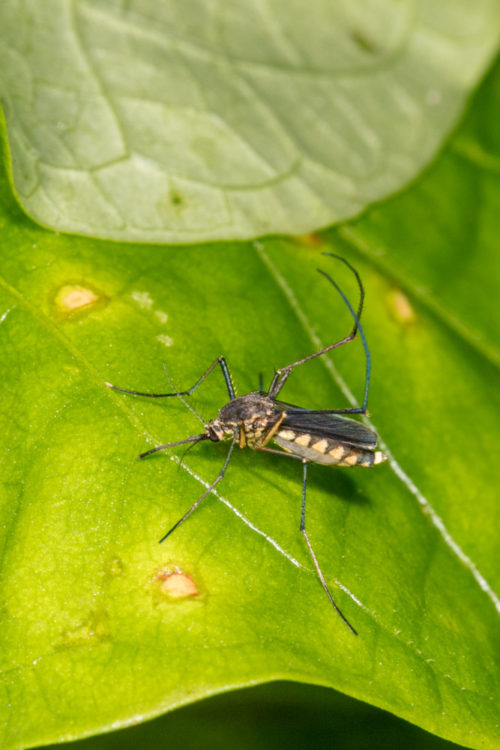
Macro photography consumes both considerable amount of time as well as considerable quantity of blood which are donated to these insects. Fun part of insect photography is getting bitten by them. Mosquitos rank number one blood suckers in that list. You will find bunch of these Culex mosquitoes in your garden roosting on the green leaves in large numbers before they come inside the house for their night duty to feed on you.
If you use insect repellents, the smell of it will drive most of the insect away. So if you are planning to photograph them, best method is to cover yourself well and apply repellents only to exposed areas of the body. Some people produce chemicals that smell bad to mosquitoes, which may be the reason they are not getting bitten by mosquitoes. I am on the opposite spectrum and I tend to attract these females in large quantity 😉

The female mosquito is the one that bites (males feed on flower nectar). She requires blood to produce eggs. Her mouth parts are constructed so that they pierce the skin, literally sucking the blood out. Her saliva lubricates the opening. It’s the saliva plus the injury to the skin that creates the stinging and irritation we associate with mosquito bites.
Insect repellents often contain DEET, permethrin although there are more natural ingredients available, such as eucalyptus or citronella oil extract. Most of these repellents last only for an hour or so. You can try to limit your exposure to mosquitoes when outdoors by using a net clothing or by covering exposed skin with light colored clothing and a hat. Mosquitoes tend to be more of a problem from dusk to dawn.
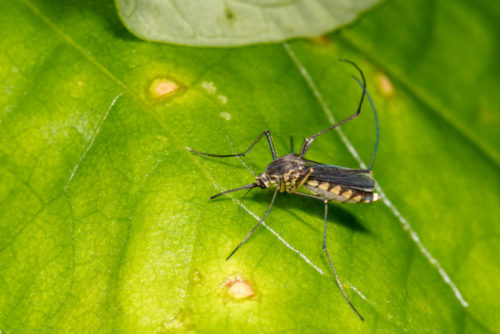
To photograph these mosquitoes I used Canon EOS 5DSR with Canon EF 100mm f/2.8L Macro IS USM fitted with 68mm Kenko extension tube set. This gave me nearly 2:1 magnification. It also cuts down nearly 2 stops of light. So I used Canon MT-24EX macro twin light flash to light these mosquitoes.
Culex quinquefasciatus (earlier known as Culex fatigans), the southern house mosquito, is a medium-sized mosquito found in tropical and subtropical regions of the world. Adult Culex quinquefasciatus is a medium-sized mosquito and is brown in colour. The body is about 3.96 to 4.25 mm long. While the main body is brown, the proboscis, thorax, wings, and tarsi are darker than the rest of the body. The head is light brown with the lightest portion in the center. The antennae and the proboscis are about the same length, but in some cases, the antennae are slightly shorter than the proboscis. The flagellum has 13 segments that may have few or no scales. The scales of the thorax are narrow and curved. The abdomen has pale, narrow, rounded bands on the basal side of each tergite. Males can be differentiated from females in having large palps and feathery antennae.

The larva has a short and stout head. The mouth brushes have long yellow filaments used for filtering organic materials. The abdomen consists of eight segments, the siphon, and the saddle. Each segment has a unique setae pattern. The siphon is on the dorsal side of the abdomen, and is four times longer than its breadth. The siphon has multiple setae tufts. The saddle is barrel-shaped and located on the ventral side of the abdomen with four long anal papillae protruding from the posterior end.
Mature Culex quinquefasciatus females fly at night to nutrient-rich standing water to lay eggs. The larvae feed on organic material in the water and require between five to eight days to complete their development at 30°C. The larvae pass through four larval instars, and towards the end of the fourth instar, they stop eating and undergo moulting to give rise to pupae. After 36 hours at 27°C, adults emerge. The exact timing of development can vary depending on temperature. Both males and females take sugar meals from plants. But after mating, the female seeks a blood meal on mammals and birds. Ingested blood is necessary for egg development. A single female can lay up to five rafts of eggs in a lifetime, with each raft containing thousands of eggs. The exact number varies depending on climatic conditions.
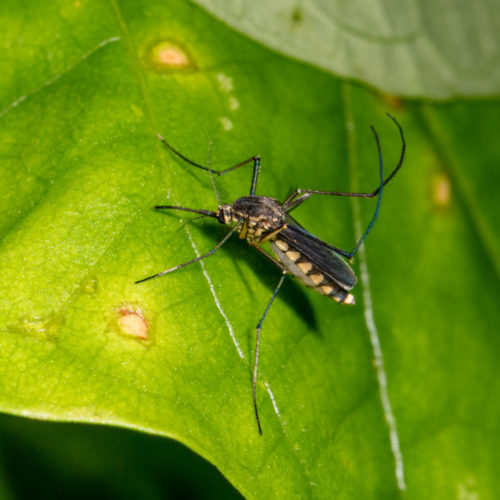
The Culex quinquefasciatus can transmit zoonotic diseases that affect humans and wild and domestic animals, such as lymphatic filariasis, avian malaria, St. Louis encephalitis, Western equine encephalitis, and West Nile fever. It causes infection through biting during blood meal. In India and Southeast Asia, it is the primary vector of Wuchereria bancrofti, a nematode that causes lymphatic filariasis. It acts as an intermediate host for the helminth parasite by harbouring the larval stages. It also transmits Plasmodium relictum, a malarial parasite of birds, and is the principal vector in Hawaii. It is the definitive host for malarial parasite as it harbours the sexual cycle.
It breeds profusely in dirty water collections, including stagnant drains, cesspools, septic tanks with leaks, burrow pits, and almost all organic polluted water collections. In optimum temperature and humidity, the lifecycle will be completed in seven days, passing through the egg, larval, pupal, and adult stages.
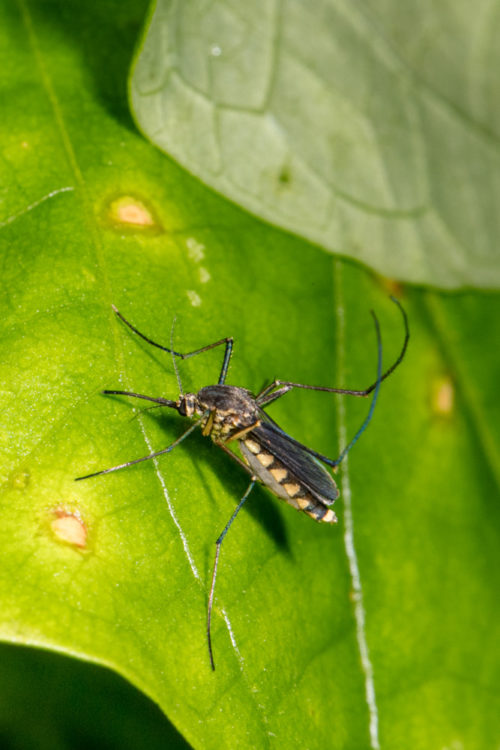

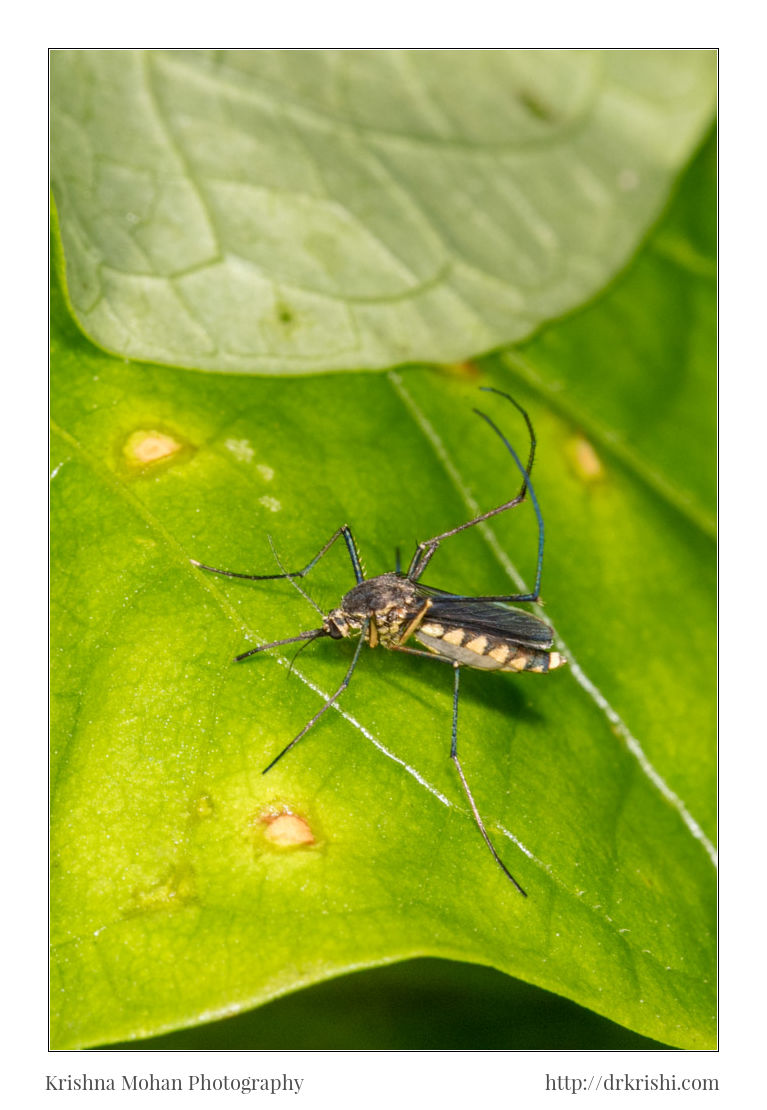
sir, how did you make them pose for you. Normally mosquitoes fly away moment they see humans
Very nice blog doc
Very informative thanks 🙂